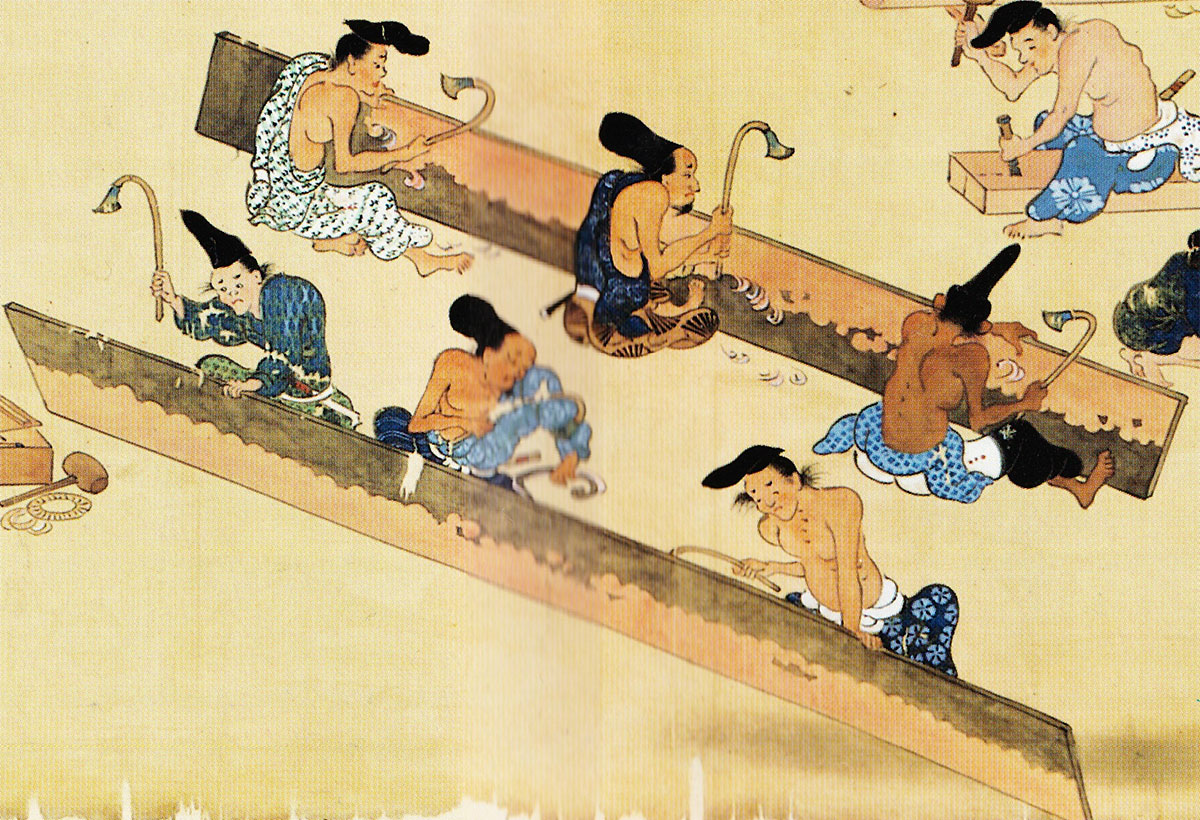If you want to amuse yourself with a real philosophical brain teaser, try working out the answer to this question: how much of a building has to survive in order for it to be the same building? For most of us, it is the sort of question that we might briefly think about for fun; but for the Japanese government, this is one of the organization’s biggest challenges.
Many of this country’s tourist attractions are made out of wood and are decaying. Take for example, Nara’s 法隆寺Houryuu-ji which houses the world’s oldest wooden building. How much of the original material would you guess is left?
The answer is that about 15% of its biggest attraction is still the original material. More would likely have been preserved if it wasn’t for a fire in 1949 that tore through the building. Others like 法起寺Hokki-ji in Nara are luckier as 50% or so of the original material is still intact, but even that is a relatively large number.
 Photo: Mith Huang
Photo: Mith HuangThe problem is that wood simply isn’t a very good material to use for building things that are expected to last the test of time. As well as fires, wooden buildings in this humid country have to face an onslaught of bugs and fungi that view the heritage sites as a delicious treat. Add to that earthquakes and typhoons and it is amazing that anything is still standing! The cracks and warping seen at the corners of many buildings are a testament to how tough it is to last in Japan.
As a result, many of the most popular tourist attractions are two buildings in one: an original and a reconstruction stuck together like an awkward chimera. To try to ensure that this cohabitation is as agreeable as possible, authentic materials are used to make any repairs or alterations. Being Japan, this can be taken to extremes. At Houryuu-ji not only is the same ヒノキHinoki・Japanese Cypress Tree wood used in any renovations, but also care is taken to find wood with similar blemishes to the original.
This wood was then treated to give it a worn appearance through a technique called 古色塗りKoshoku nuri which is the applying of a coating that gives the item an antique look. Other techniques involve using a torch to burn a specific look into the wood. Of course, these techniques can cause plenty of problems themselves, as they often shorten the treated wood’s lifespan, but at least they give the wood an authentic look.
One of the interesting side effects of this authenticity is that it is not just historic buildings, but also authentic techniques and tools that are being preserved. The 槍鉋Yari-Ganna・Japanese woodworking plane was more or less obsolete, but authentic reconstruction efforts have brought the tool back from the grave. It is believed that the cut from this ancient tool is so clean that it actually prolongs the life of the wood and is the only option for renovating these temples.

Because of the symbiotic relationship between craftsmen, tools and buildings, Japan has introduced a law that codifies the protection of the traditional techniques and the artisans who use them. However, in this modern age the number of members are limited. When a survey was done in the 1970s, there were only 5 individuals and 3 organizations recognized as authentic enough to be used for reconstruction!
All of this combined allows Japan to keep their buildings as authentic as possible. Sure, the original materials are not there, but at least the techniques and the ideology is. In Japan, there is a long history of Japanese buildings being taken down, rebuilt and reconstructed every 400 years or so. While there is an effort to preserve as much of the original history as possible, there has always been an acceptance that time will cause a lot of wear and tear. It could be argued that we are keeping up with the same tradition even now.
‘The valid contributions of all periods to the building of a monument must be respected,’ The Venice Charter, a code of standards for the preservations of buildings, agrees with this idea, ‘subsequent modifications over the course of time also possess artistic or historic value’. So while it may seem sad to imagine these precious links to Japan’s past eroding every year, the renovations and updates are also becoming part of the building’s ever-evolving identity.






This site is protected by reCAPTCHA - Privacy Policy - Terms of Service
I see no problem with the systematic rebuilding and restoration of historic wooden buildings. It’s just a part of the life cycle of the building. Although traditional building techniques should be used, slight modifications (reinforcing an earthquake-vulnerable junction using wood construction) should be expected. I once lived in a 400 year old house in the US. The construction was pretty impressive… The house itself sat on a stone foundation and was supported by whole tree trunks, rather than milled wood.
法隆寺 (Hōryū-ji) is in Nara not Kyoto! I also read this morning that there has been vandalization at some of Nara and Kyoto’s World Heritage Sites recently. Some of the wooden buildings have been stained with an oil-like liquid. http://www.japantimes.co.jp/news/2015/04/09/national/spate-of-vandalization-hits-kyoto-nara-world-heritage-sites/
Thanks for pointing out that howler. Not sure how that got through…
No Worries! I think it was picked up and fixed pretty quick. Thanks for the interesting article.